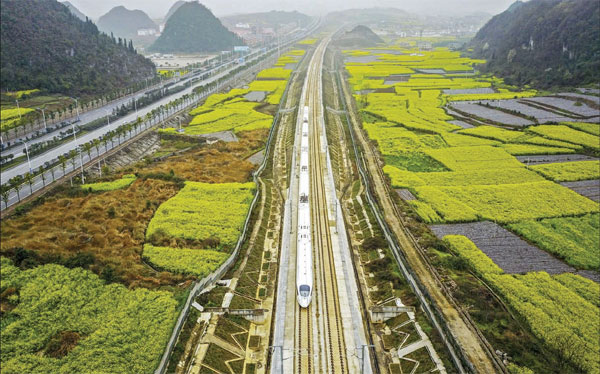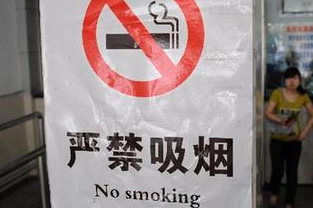Faster bullet trains boost connectivity

Improvements in technology will mean 400 km/h links to the Belt and Road
China is working on next-generation bullet trains with a maximum operational speed of 400 kilometers per hour that will be ready by 2020 for markets linked to the Belt and Road Initiative, the country's top railway vehicle maker says.
"We will apply new materials in the research and production of the future high-speed trains, such as carbon fiber and aluminum alloy, which will help reduce weight and enhance energy efficiency," says Qiao Feng, a senior engineer at the CRRC Changchun Railway Vehicles Co, a subsidiary of China Railway Rolling Stock Corp.
The new train will be available in markets related to the Belt and Road Initiative, and it is capable of reducing per passenger energy consumption by 10 percent compared with high-speed trains that can run up to 350km/h. CRRC will be the manufacturer and exporter, according to Qiao.
Once available by around 2020, the new high-speed trains are expected to promote regional connectivity and create new business opportunities for China and overseas economies through the Belt and Road Initiative, Qiao adds.
Feng Hao, a rail transportation researcher at the National Development and Reform Commission, says the 400 km/h high-speed train project would help many heavily populated countries switch from a long dependence on automobiles.
"Because many markets along the Belt and Road Initiative, especially in Central Asia, Southeast Asia, the Middle East and Eastern European countries, are planning to build high-speed rail lines or to upgrade their existing railway systems, they are eager to gain technological support from China to assist in daily operations, maintenance, staff training and other services," Feng says.
China will test the new bullet train alongside a portion of the Beijing-Shenyang high-speed railway line, Qiao says. The test rail line is to be completed by 2019.
Liu Youmei, an academician at the Chinese Academy of Engineering, says it is still not cost-effective to run a high-speed train at 400 km/h domestically, because elements such as bearings, electric contacts and track must be replaced more often.
But, he says, with new railway lines and lower costs for parts and service, it will not be a problem.
In the past decade, China has built the world's largest high-speed rail network and become a leader in offering high-speed train products and services. The country has passenger train services running at operational speeds between 200 and 250 km/h and currently has the technology to produce trains with a top speed of 350 km/h, according to the National Railway Administration.
Since China already made a breakthrough in high-strength bearings made by Taiyuan Iron and Steel (Group) Co earlier this year, the country will be able to supply parts and equipment to domestic and foreign railway service operators in a more cost-efficient way, Qiao adds.
Contact the writers through ouyangshijia@chinadaily.com.cn
| China has built the world's largest high-speed rail network and become a leader in offering high-speed train products and services. Lu Wei / Xinhua |
(China Daily Africa Weekly 05/05/2017 page14)
Today's Top News
- Experts: Lai not freedom fighter, but a pawn of the West
- Hainan evolves as gateway to global markets
- Opening up a new bridge between China and world
- Tour gives China-Arab strategic trust a boost
- China accelerates push for autonomous driving
- Opening of new gateway can help foster global economic and trade cooperation































